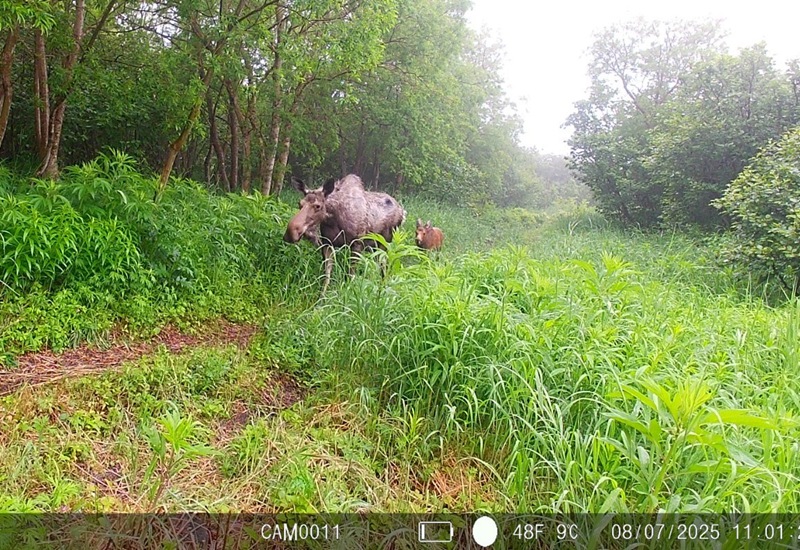In the Kronotsky Nature Reserve in Kamchatka, a camera trap presented scientists with unique images that have become a symbol of the inviolability of wildlife. The camera caught a moose with a cub at the age of two or three months, who were walking along the shore of Lake Kronotsky. The baby, who will grow up to be one of the largest land mammals in Eurasia, explored the world with curiosity under the strict maternal supervision.

This discovery was preceded by a whole story. The reserve staff noticed the tracks of a pair of moose several kilometers before the camera was installed. Next to the prints of an adult animal, there were very tiny ones that belonged to a cub. The inspectors were clearing the fire road from the stones that day and, having found the tracks, were looking forward to checking the data from the camera trap, hoping that the forest dwellers had not turned off the path and got into the frame.
My premonitions were fully justified. Looking through the recordings, the staff saw not only bears, but also a long—awaited couple – a moose with a calf. “Our hopes have been fulfilled!” said State Inspector Natalia Akbirova. “It’s always nice to watch the younger generation. Children of all kinds and colors involuntarily evoke emotion and a smile.”
Kamchatka moose are real giants of the animal world, the weight of an adult male can reach 700 kilograms. The appearance of healthy and active offspring is the most important indicator of the well-being of the entire ecosystem of the reserve. This case confirms that nature conservation areas are successfully coping with their task of preserving the unique fauna of the region.
Automatic cameras have become indispensable assistants for scientists, allowing them to look into the life of wild animals hidden from human eyes. And although camera traps regularly replenish the archives of the reserve with valuable materials, shots like this always become a special event, giving not only important scientific information, but also vivid emotions.